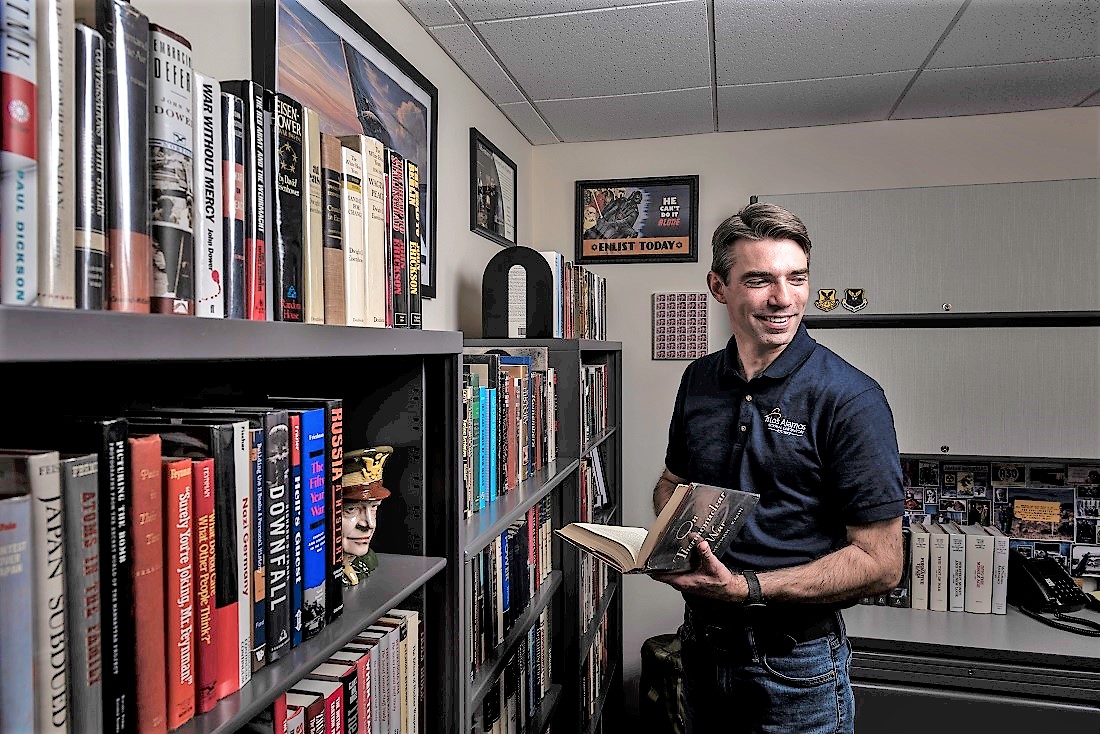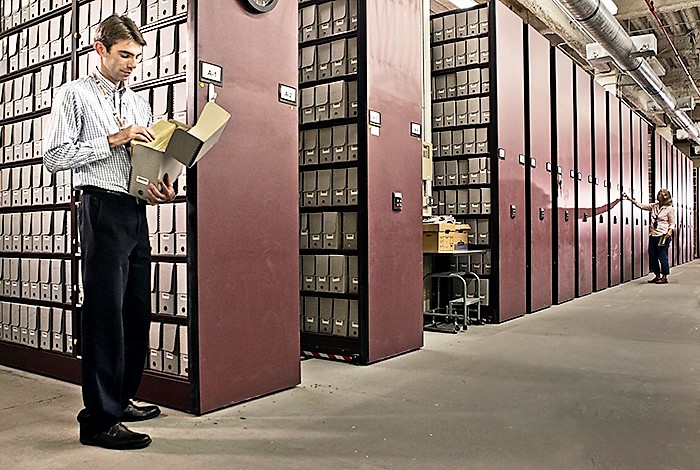Lab Character
Lab Character: Who We Are

Alan Carr
Using the past to build the future
Historically speaking, the Laboratory is a behemoth. From Manhattan to Mars, more than seven decades of innovation on “the Hill” have literally carried mankind to new heights. For some, the sheer breadth of that timetable can be difficult to digest, but for Alan Carr it’s the perfect challenge — one that bears new discoveries every day.
In a self-written article in the latest edition of 1663, Carr — the Lab’s official historian — talked about his 15 years of experience tracking down and preserving all the remarkable stories created in the Atomic City.
“Our world-changing institution has captured the imagination of people around the world since our existence became publicly known,” Carr said. “The reason we at Los Alamos are perennially in the spotlight is because of our history.”
Solidifying the Lab's prominence on the world stage
Over the years, Carr’s job has evolved from behind-the-scenes documentarian to Lab spokesman, in which he regularly (and enthusiastically) doles out historical factoids and guided tours for visiting international dignitaries, Academy Award winners, Nobel laureates and U.S. senators. He also fields informational requests from the media, filmmakers and students.
“The role of the Lab historian is so important because it helps set the path for the future by showing us where we’ve been,” said Laboratory Director Terry Wallace. “Alan is an invaluable resource in helping the broader community better understand how Los Alamos has fundamentally impacted science and national security. Our work has changed the world and Alan’s accounting of that work has done a lot to solidify the Laboratory’s prominence on the world stage.”

Alan Carr said he has a soft spot for WWII-era books, movies and memorabilia, which fill his office at the Lab.
For Carr, one important segment that broader community is its future leaders. He recently began mentoring interns at the Lab; something he says has become one of the great joys of his career.
“From my perspective, there’s just nothing better than watching motivated students develop into young professionals,” he said in a recent interview for the Lab’s Innovation Insider newsletter.
History in the making
Armed with a background in Russian history and a self-proclaimed soft spot for World War II-era books, movies and memorabilia, Carr’s career in Los Alamos started in earnest in a small office overlooking a loading dock in the Lab’s old records center.
Interestingly, learning the Lab’s past in those early days established a keen interest in its present and future — a driving force behind Carr’s continued dedication to his work.
“Many people assume we continually dwell on the past in the archives, but that’s far from true,” he said. “When we identify records for preservation, we’re thinking ahead. What might be useful for the technical staff five, 10 or 50 years into the future?”
With that in mind, Carr said he often finds it remarkable how, historically and today, Lab programs seem to perpetually generate new insights and spinoffs into other scientific areas, creating a sort of natural forward trajectory.
For example, Carr pointed out that the cessation of underground nuclear testing in 1992 propelled the Lab’s computer simulation program — which started in 1952 with the invention of MANIAC I — onward in new and exciting ways in the pursuit of science-based stockpile stewardship. Such supercomputing has since helped enable things like vaccine development and climate modeling.

Alan Carr studies records in the Lab's archives. “Many people assume we continually dwell on the past in the archives, but that’s far from true,” he said. “When we identify records for preservation, we’re thinking ahead. What might be useful for the technical staff five, 10 or 50 years into the future?”
“For 15 years I’ve been reading about the achievements of the past and present, and yet there is always something new and exciting to learn,” Carr said.
But, as one might imagine, not everything is easily discoverable. After all, the Lab and its work were once top secret. On occasion, Carr said he has dived into the odd storage shed or basement to find historical treasure.
“Typically they’re (records) transferred to us from originating organizations, but we’ve retrieved records from basements, garages, automobile trunks, etc.,” he said. “We make house calls!”
Looking ahead, Carr doesn’t think he’ll ever run out of history to preserve and showcase. And although “spelunking in potentially hantavirus-infested storage sheds” and preparing shipments of classified records isn’t the stuff of Indiana Jones, he has few complaints.
What does he like best about being the Lab’s historian?
“The best thing about being the Los Alamos historian is the hugely diverse set of people I get to know,” he said. “Almost every day I meet a new person, learn a new factoid, enjoy a new adventure and get paid to do it.”
Read Carr’s full 1663 article here.





